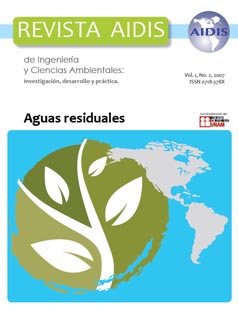Influencia de cambios en la operación de un sistema de lodos activados a escala de laboratorio sobre la estructura bacteriana determinada mediante técnicas moleculares.
Main Article Content
Abstract
The activated sludge wastewater treatment is a complex, dynamic and heterogeneous biological system. Little is known about its biology because of the difficulty of growing microorganisms through conventional methodologies. It is estimated that approximately 85 to 99% of the components that make up bacterial communities in activated sludge have not been grown or identified. During the last years, the advent of molecular techniques such as the polymerase chain reaction (PCR) has promoted the development of several methods that allowed researchers to obtain information on the genetic diversity of the microorganisms and eliminate the need to grow them for identification. These methodologies have been very important to learn about the profusion and abundance of the different biotypes present in environmental samples. This work submits the results of the use of the t‐RFLP technique with the 16S rRNA gene as a genetic marker, applied to a laboratory‐scale activated sludge system for the detection and prediction of operational problems, especially in the separation of the liquid effluent and in the compaction of solids. Two reactors were designed with their respective sludge sedimentation tanks. Operation tests were carried out under different conditions to determine physical and chemical parameters and a t‐RFLP analysis was also conducted. The results indicated that the reduction of DO induces bulking. The t‐RFLP electropherograms confirmed that the fragment of 196 pb was a representative of bulking. During the reduction in the F/M rate (0.3 to 0.1), the electropherograms showed an increment of the fragment of 33 pb associated with bulking. Experiments are being developed on the variation of the cell retention time in the reactor, its influence in the process efficiency and in the changes of the bacterial diversity. Considering that the fragments of 196 pb and 33 pb coincidently increased their relative frequency in the days before the detection of bulking by physicochemical parameters, the studies will continue to verify whether these fragments or other fragments that may appear can be used to predict operational problems.
Article Details
How to Cite
[1]
Castillo, G., Urmeneta, C., Dorador, C., Muñoz, P., Herrera, L. and Escobar, B. 2009. Influencia de cambios en la operación de un sistema de lodos activados a escala de laboratorio sobre la estructura bacteriana determinada mediante técnicas moleculares. Revista AIDIS de ingeniería y ciencias ambientales: Investigación, desarrollo y práctica. 1, 2 (Nov. 2009).
